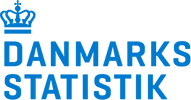Improving the evidence for European migration policy making
This policy brief synthesizes central results from quantitative migration and population projections on future migration flows to and within the EU and projects the population in EU member states at an unprecedented level of detail, including by age, sex, level of education, and country of origin, produced as part of the FUME project.
Migration is an important driver of population change in the European Union. Since 2011, the population in the 27 EU member states has increased by around 8 million people. This increase has been entirely due to migration since natural population change – the difference between births and deaths – was negative during this period. In other words, without international migration, the population in the EU would have declined during the past decade.
International migration will also be a key factor for demographic developments in the future. Projections about future migration flows to, within, and from Europe are therefore important for future policy making. Knowing the expected size and composition of migration flows can help policy makers design strategies for rural and urban development, public service provision, labour market issues, and integration.
This is the second of two policy briefs that summarize key findings of the FUME project. The first policy brief highlights why people from origin countries decide to migrate and which factors influence their decision on where to go. It also presents qualitative scenarios which describe possible future socio-economic trajectories in Europe and their implications for migration trends. This second policy brief synthesizes central results from quantitative migration and population projections that were produced as part of the FUME project. The projections model future migration flows to and within the EU and project the population in EU member states at an unprecedented level of detail, including by age, sex, level of education, and country of origin. In addition, FUME projections cover various spatial levels, from the international to the national to the local. This policy brief also describes how emerging big data sources were used to gain a better understanding of migration flows. It concludes by highlighting key messages and recommendations.
Figure 1. Intra-EU migrants: Stocks of migrants in the EU that originate from another EU member state (in millions)
Source and copyright: Wiśniowski, Aparicio-Castro and Yildiz (2023).
About the project
The Horizon 2020 project ‘Future migration scenarios for Europe (FUME)’ focuses on understanding the patterns, motivations, and modalities of migration at multiple geographical scales, from international through regional to the local, and on developing possible future scenarios of migration to Europe. These scenarios shall improve our understanding of the complexity and diversity of migration – and support migration policies, integration measures, labour market and cohesion policies at different governance levels.









